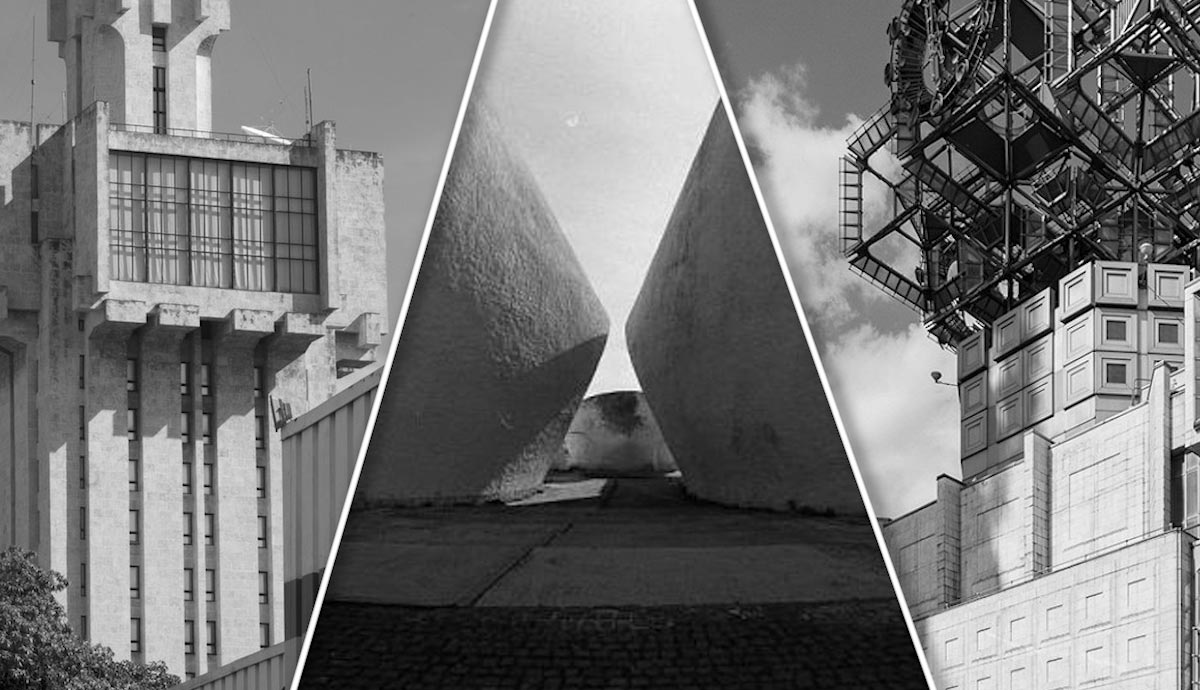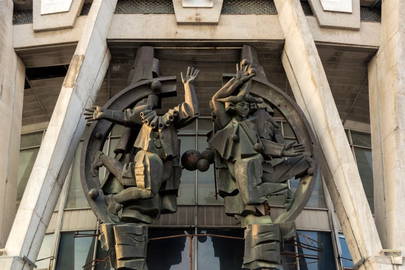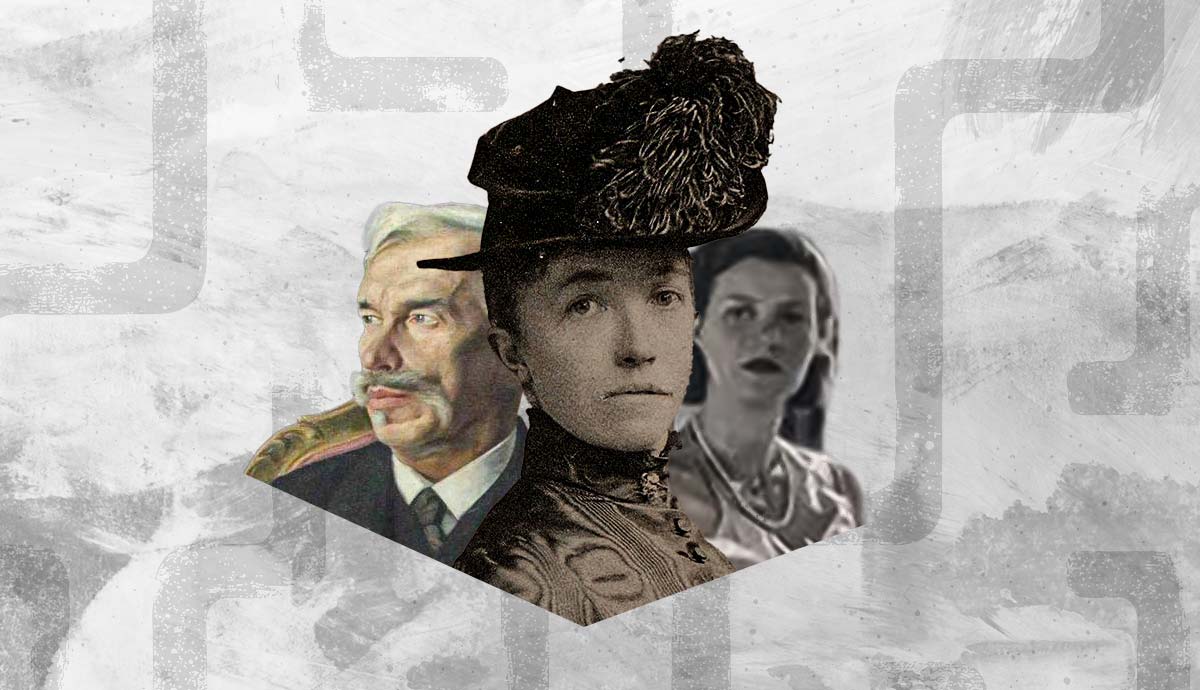
The architectural movement of Brutalism has British roots, yet it reached its full potential in the Soviet Union behind the Iron Curtain. This architectural style emerged from the post-war necessity of rebuilding destroyed cities affordably and efficiently. Soviet Brutalist buildings, still standing tall in now independent countries, were bold and ambitious projects that reflected ideology, regional and national traditions, and climate conditions. Discover nine remarkable examples of Soviet Brutalism in its intimidating glory from central Moscow to distant Cuba.
1. Bank of Georgia, Tbilisi, Georgia

Probably the most classic example of Soviet brutalist architecture is found in Georgia, where the building currently operates as the headquarters of the Bank of Georgia. Originally constructed as a central office of the Georgian Ministry of Highway Construction, it bore a striking resemblance to the iconic Canadian Habitat 67, a residential complex made from several hundred pre-made concrete blocks. Completed in 1975, the building is 18 stories.
The leading architect, George Chakhava, was also the Deputy Minister of Highway Construction, allowing him to tailor the project to his own needs and standards. Chakhava found inspiration in the works of El Lissitzky and the Russian Constructivists. His idea was to occupy as little ground as possible, so the building unfolds on its top floors, mimicking the branches of a tree.
2. Kyiv Crematorium, Kyiv, Ukraine

The complex of Kyiv Crematorium consists of two concrete shells facing each other, with spaces dedicated to grieving relatives inside. The functional structures and mechanisms were hidden underground to turn the visitors’ attention away from the physical aspects of cremation and burial. Designed in the late 1960s, it was specifically made to avoid direct associations with the incineration of bodies, still fresh and painful after the Nazi massacres in Ukraine.

Linked to the crematorium, the artists Ayd Rybachuk and Vladimir Melnichenko also constructed a monument called the Wall of Memory. The reliefs on the wall represented stages of human life and connection to one’s native land. However, in 1982, soon after its completion, the wall was cordoned off and covered in concrete. As explained by the Soviet authorities, they deemed the style too expressive and contradictory to the official ideology. Uncovering and restoring the Wall of Memory was one of the first decisions made by the independent Ukrainian state after the collapse of the Soviet Union in 1991.
3. House of Nuclear Atomists, Moscow, Russia

This long residential building in the southern part of Moscow was a long-term experimental project that offered almost a thousand apartments to its residents. Constructed between 1970-1986, the building is still in active use, but has lost its appeal due to its enormous size. The building stretches for almost half a kilometer and has 14 floors, three of which are occupied by retail, while the rest accommodate 980 flats.
Among the Moscow locals, the building quickly became known as the Ship-House due to its resemblance to a cruise liner. It was also known as the Bachelors’ House due to the number of unmarried engineers who lived in one-bedroom apartments. Another nickname the building received was the House of Nuclear Atomists, but not because they settled in the new building. The leading architect, Vladimir Babad, had never worked with residential complexes before, but he did have tremendous experience constructing nuclear reactors. His expertise allowed the Ship-House to become extra-resistant to seismic activity. The walls are angled at 87° or 93° so that the building would survive an earthquake, despite them never happening in Moscow. It could even, allegedly, survive bombings and nuclear explosions.
4. Chisinau Circus, Chisinau, Republic of Moldova

The brutalist building of Chisinau State Circus was built to mark the 545th anniversary of the city’s first mention in historical sources. The architects decorated the facade with sculptures of clowns and acrobats. The interior featured colorful mosaics referencing early Soviet avant-garde art. The project illustrated the flexibility of Brutalist architecture, easily incorporating decoration and detail, contrasting with the raw and minimalist aesthetic of the concrete structures. The grand opening was held on 25 April 1982 with seats for 1,900 spectators.

Chisinau Circus was abandoned for decades. The building even started slowly collapsing, and sculptural clowns lost their heads due to corrosion. However, in recent years, the Moldovan government announced plans to restore the building and protect it as an important piece of cultural heritage.
5. Academy of Sciences Headquarters, Moscow, Russia

A legendary and controversial example of Soviet Brutalism, the Academy of Sciences headquarters was a long-awaited project that was particularly hard to realize. The building was designed in the 1960s, but the construction work was constantly delayed as the architects faced obstacles at almost every stage. During the three decades of planning and construction, the Soviet Union collapsed, changing the building’s context and purpose almost overnight.

Unable to live and work in political turmoil and uncertainty, many Russian scientists moved abroad instead of settling in the newly constructed headquarters. Some superstitious locals claimed that it was the cursed land that was forcing people to leave. According to a legend, the location was occupied by slaughterhouses, and the ground was soaked with blood.
The building’s structure remains a mystery even to those who work there. Some say that the metallic structures on top hide some special service facilities. No one can say for sure how many underground floors there are or how people can access them. There are also hundreds of elevators hidden throughout the complex. It is sometimes known as the “Golden Brains” because of the distinctive golden color of its upper floors.
6. Aul Residential Complex, Almaty, Kazakhstan

The round towers of this residential complex in Kazakhstan were among the boldest and most ambitious parts of the Soviet residential experiments. Built in stages between 1986 and 2002, Aul got its name from a specific type of fortified stone-built villages found in Central Asia and the Caucasus region. Circular forms created softly curved pathways, allowing for more natural movement of residents.

The key to understanding Aul’s puzzling design lies in observing the harsh climate conditions of the region. The rounded balconies were designed to limit the heat and light that came inside the apartments. The seismic activity in Almaty is exceptionally high, requiring additional support and safety measures for all tall buildings. Each tower consists of three round structures that support each other and redistribute weight.
7. Sevan Lake Union of Writers’ House, Lake Sevan, Armenia

The round concrete structure facing the Armenian Lake Sevan was built decades before the term Brutalism was coined, yet it still fits into the category. In 1932, the building functioned as a resort and a working area for the members of the Soviet Writers’ Union. The curved glass terrace allowed for a wider view of the lake with spaces made for outdoor leisure right below it.
The astonishing building hides a tragic story of repression and terror. In 1937, its architects, Kochar and Mazmanyan, were arrested and deported to the polar regions of Russia. The two were accused of nationalism and supporting Leon Trotsky. They were rehabilitated and returned to Armenia after Joseph Stalin’s death in 1953. Today, the building functions as a small and run-down hotel, but it maintains its astonishing view of the lake. In 2016, the Getty Foundation partially financed the much-needed renovation, but the futurist-looking terrace is still far from its former glory.
8. Russian Embassy Building, Havana, Cuba

The complex of the Soviet embassy in Cuba, with its intimidating tower, was simultaneously a nod to Constructivist architecture and a gesture of dominance in the region. Small windows and thick concrete function as protection from heat and light while also adding the psychological effect of the stable presence of the Soviets.
Some locals compared the building to a sword that’s plunged into the ground, while others thought it resembled a medical syringe. The tower’s construction started during the Cold War. It remains an austere reminder of the dark past, starkly contrasting with other countries’ embassies located nearby.
9. Uzbekistan’s State Museum of History, Tashkent, Uzbekistan

The state museum in Tashkent is one of the most significant examples of seemingly international and depersonalized Brutalist style bending under the influence of local traditions and customs. It was originally built in 1970 as a museum dedicated to Vladimir Lenin. After the collapse of the Soviet Union, it changed its focus to the history of Uzbekistan and Central Asia. Although technically a part of the Soviet Brutalism legacy, it looks unusually decorative.
The decorations, however, have distinct functions. One of the main goals of Uzbekistani architecture was to limit the harsh sunlight, especially in places like museums, where sunshine could do much harm. Carved panels covering the facades are not merely decorative but protective as well, ensuring the museum space is shielded from harsh climate conditions. At the same time, the ornament inspired by local crafts makes the building visually lighter while also hinting at the building’s current purpose.










